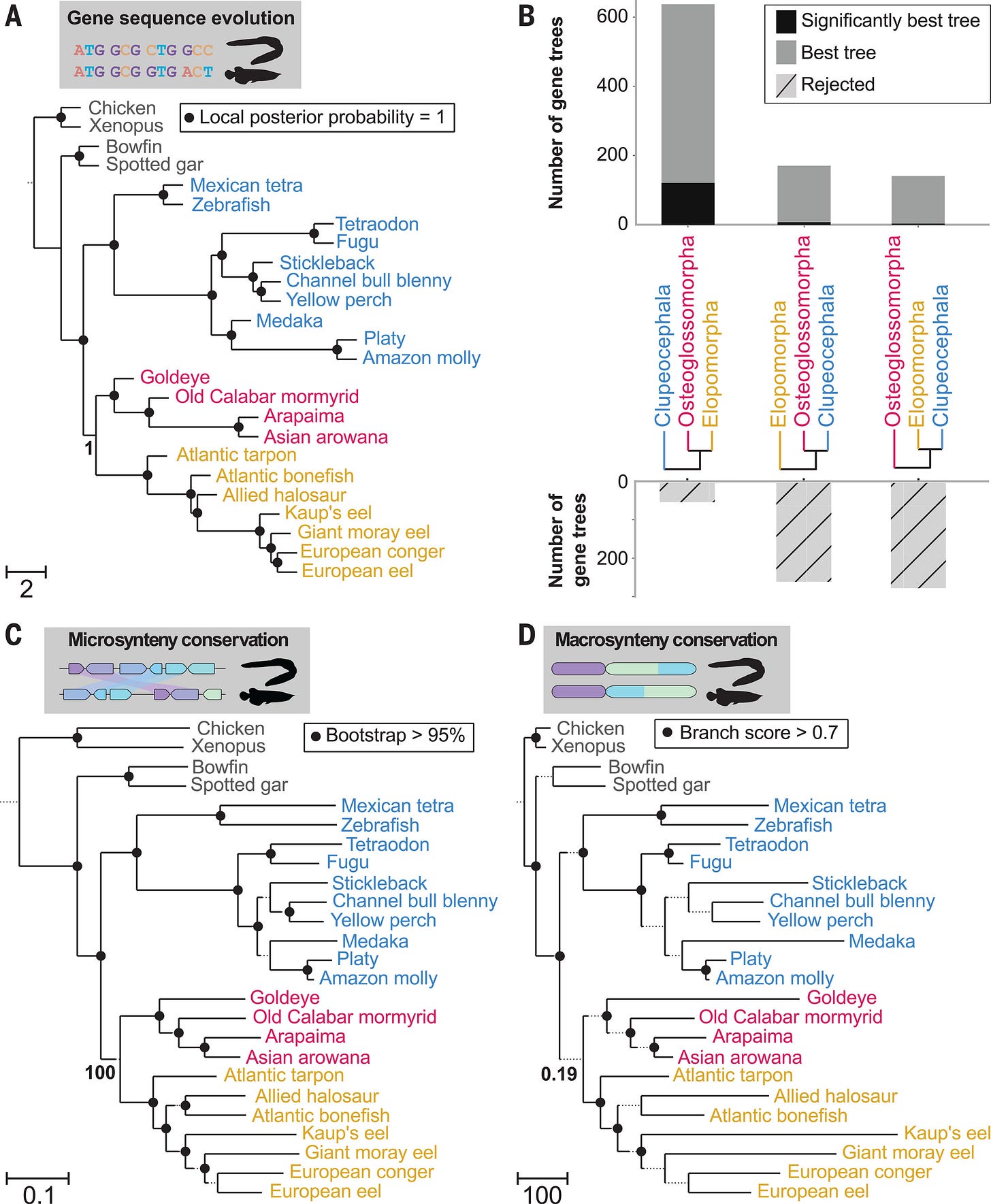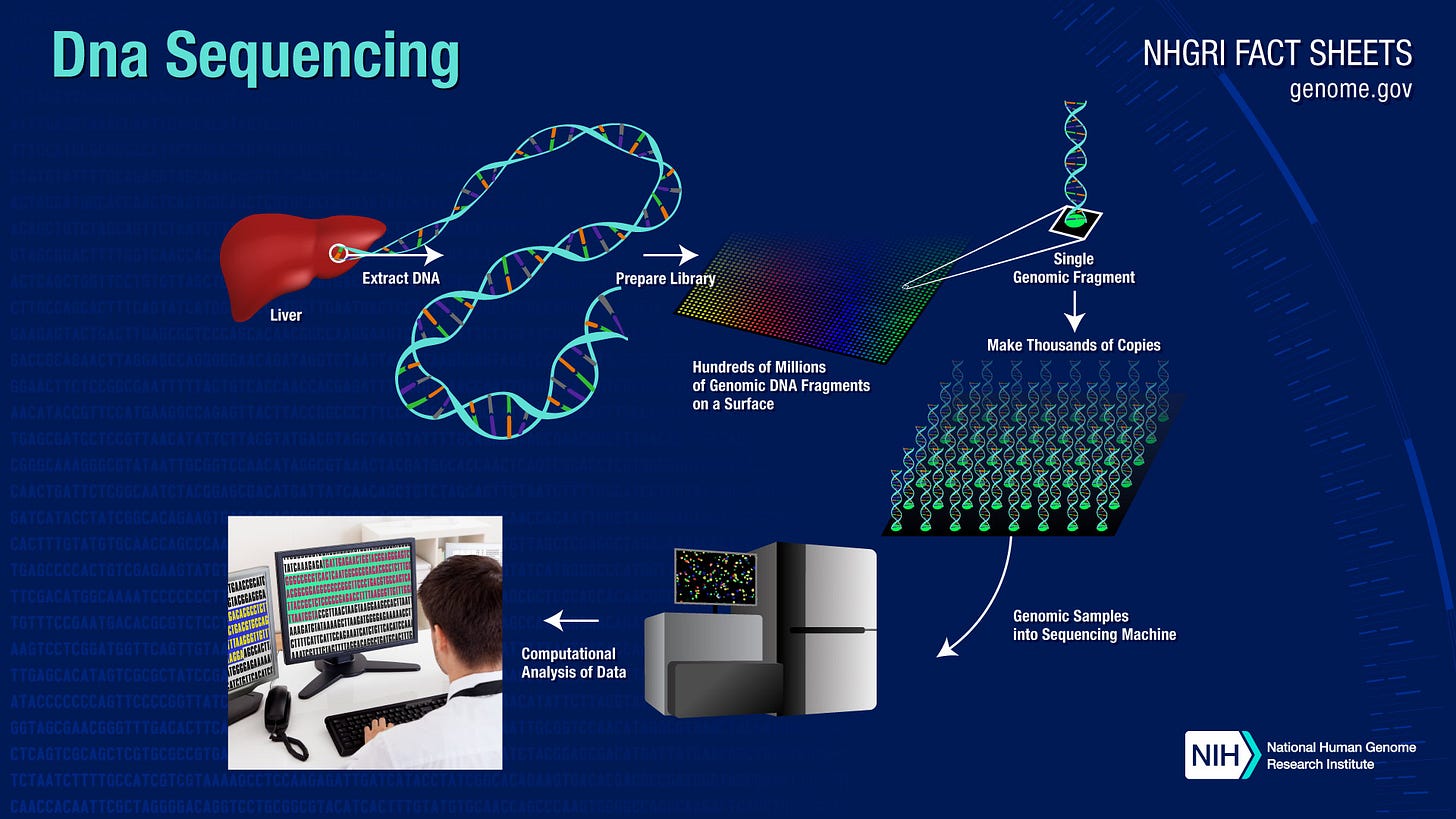Phylogenomics: a (very) brief history
Organizing life on Earth into a 'family tree'
Phylogenetics aims to reconstruct the evolutionary history of biological features. The evolutionary history of lineages (or a species tree) is often inferred using genome-scale data (or phylogenomics). Knowing the history of a lineage underpins many comparative and evolutionary studies.
Then
Phylogenetics gained traction in the mid-19th century. One of the pioneers of phylogenetics was the German biologist Ernst Haeckel. Haeckel's work contributed to the foundation for the modern understanding of phylogenetics. Charles Darwin also made seminal contributions, noting that all living beings on Earth may have descended from a unique ancestor — the last universal common ancestor (or LUCA).

During the early years, most phylogenetic studies leveraged information from comparative morphology and embryology; however, different data gave different results, a phenomenon known as incongruence. Incongruence reflects uncertainty, occluding robust inference of phylogeny.
The development of molecular biology in the 1960s and 1970s revolutionized the field of phylogenetics. Scientists could use molecular data (e.g., proteins and nucleotides) to build more accurate phylogenetic trees. In the 1960s, the theoretical foundations for phylogenetics were detailed by Emile Zuckerkandl, Emanuel Margoliash, Linus Pauling, and Walter M. Fitch.
Broad sketches of evolutionary relationships among birds, reptiles, primates, and other lineages began to be inferred. DNA-DNA hybridization — a measure of genetic similarity between two populations of DNA — was the predominant method for measuring evolutionary distance.
Now
The advent of DNA sequencing, particularly whole-genome sequencing, paved the way for modern phylogenetics. As genome sequencing costs go down and quality goes up, the ability to generate vast amounts of molecular data for evolutionary inference becomes possible.
One of the key techniques used in modern phylogenetics is maximum likelihood, a statistical method used to estimate the most likely phylogenetic tree based on a given dataset. Maximum likelihood allows researchers to account for the probability that different sequences of DNA may have arisen through different evolutionary processes and to choose the tree that is most likely to have produced the observed data.
Another important development in modern phylogenetics is the use of Bayesian inference. This statistical method can estimate the probability of different phylogenetic trees given a data set. Bayesian inference is particularly powerful but is computationally expensive, stalling widespread adoption for large-scale datasets.
Tree inference aims to find the most likely tree given a data set; thus, phylogenies are hypotheses, not ground truths.
In addition to these statistical methods, modern phylogenetics relies heavily on computational tools such as alignment algorithms and phylogenetic software packages. Alignment algorithms are used to compare and align sequences of DNA, while phylogenetic software packages allow researchers to estimate phylogenetic trees and test different hypotheses about evolutionary relationships.
Despite these advances, modern phylogenetics still needs to overcome several challenges.
One major issue is that many groups of organisms have complex evolutionary histories that are difficult to untangle using the current gold-standard methodologies. In these cases, researchers may need to combine molecular data with information from other sources, such as macro- and micro-synteny, to build accurate phylogenetic trees.

The history of phylogenetics is one of constant refinement as new technologies and methods expand our ability to infer evolutionary relationships among organisms. Phylogenetics will remain essential for understanding the diversity of life on Earth and how different species have evolved and adapted over time.
Connect with Genomely!
Substack: Genomely from Jacob L. Steenwyk
Twitter: @Genomely
GitHub: GenomelyBio
Connect with me!
Twitter: @jlsteenwyk
Website: jlsteenwyk.com
Header image generated using DALL·E 2 from OpenAI





Nice piece of reading. Thanks Jacob. You rock, as usual 👑☄️🔥